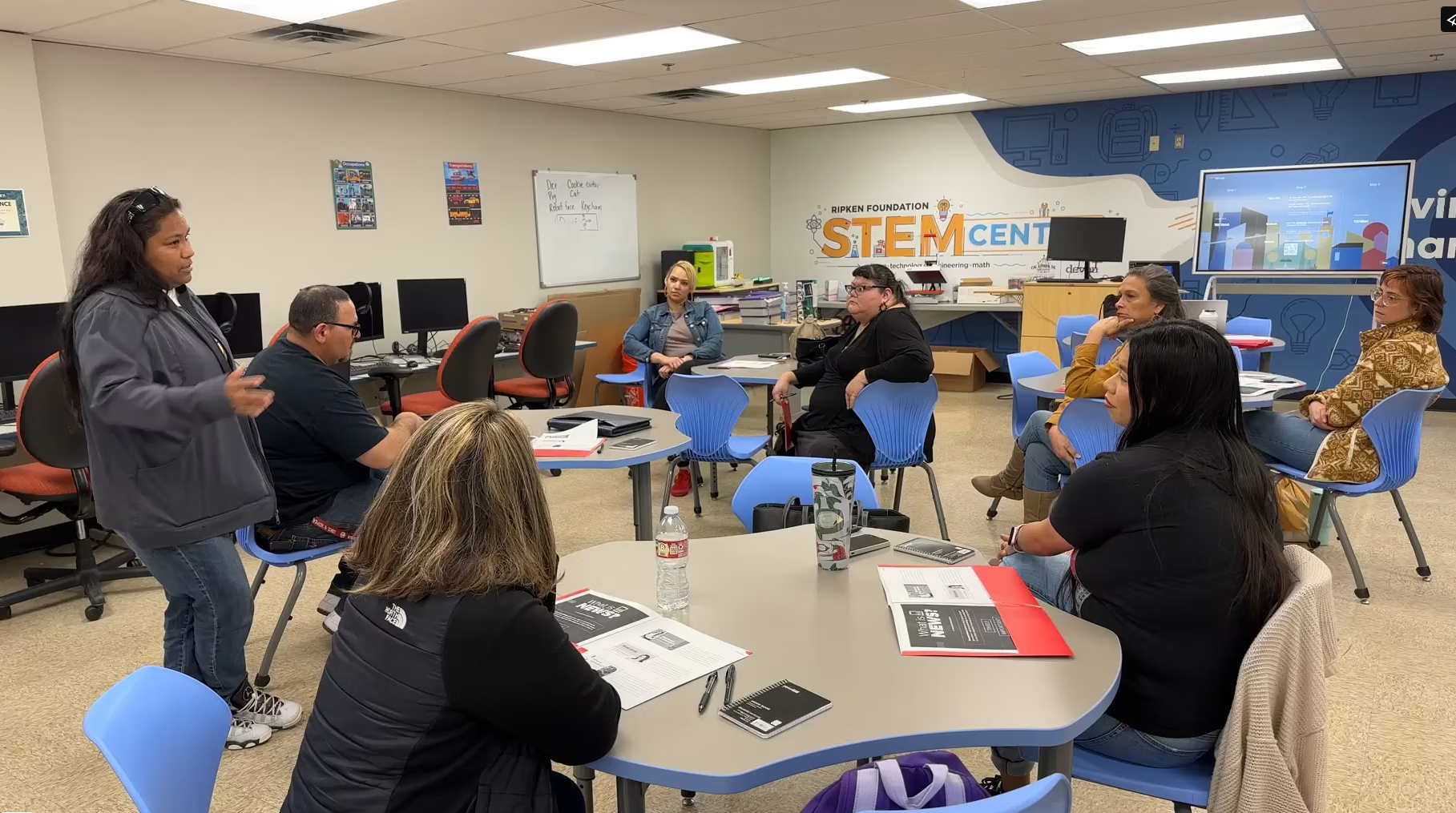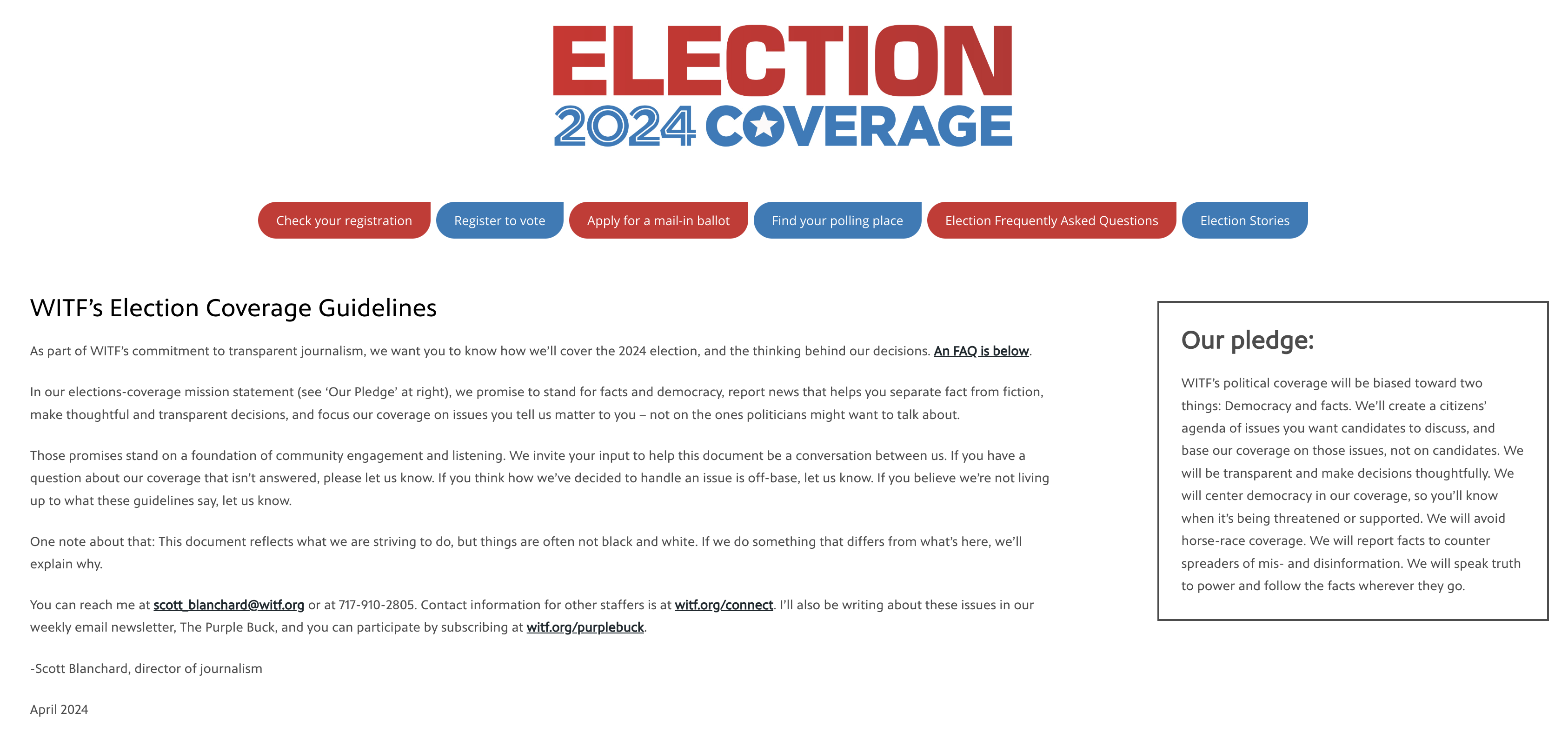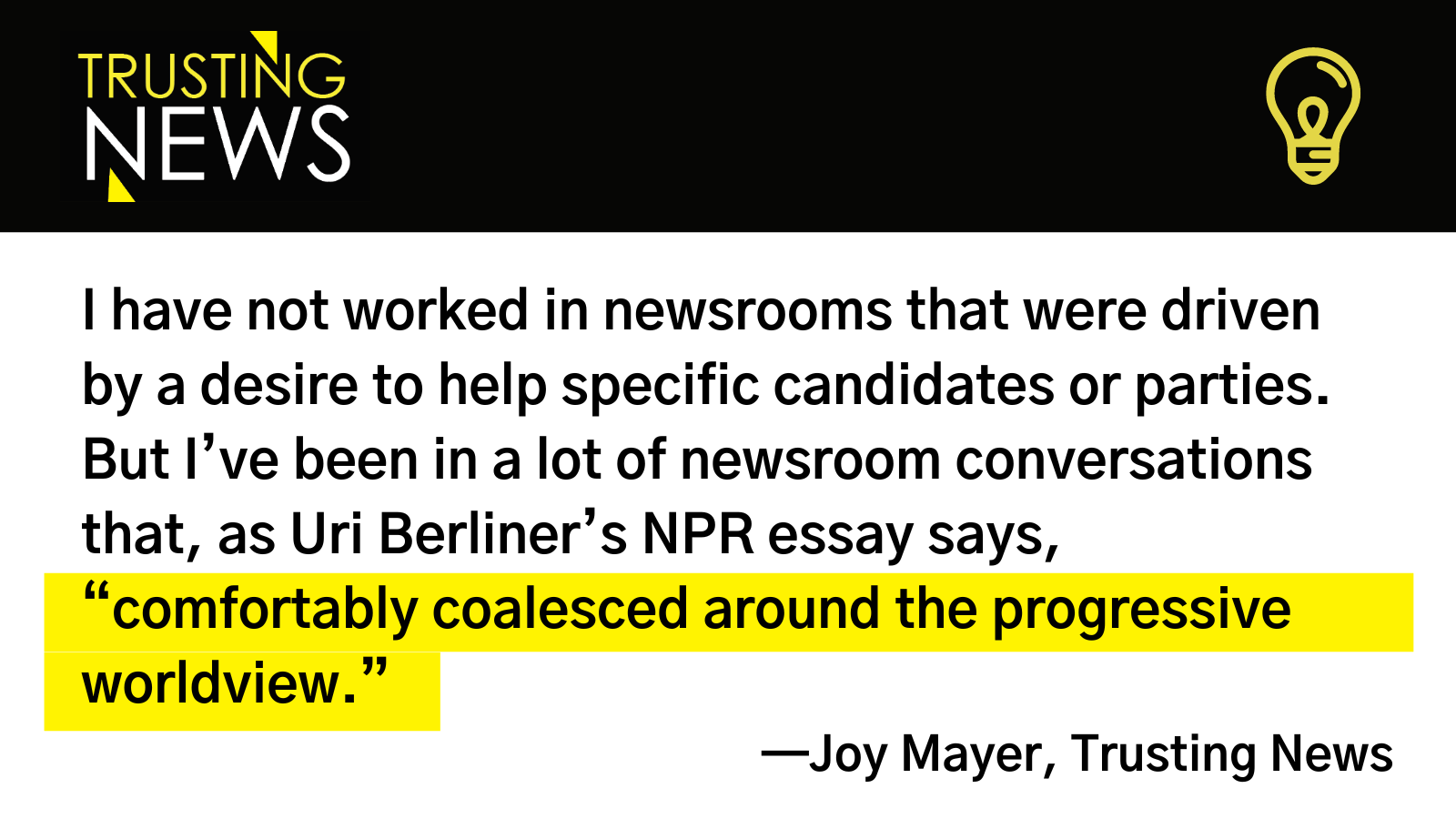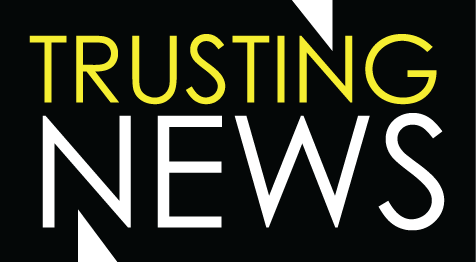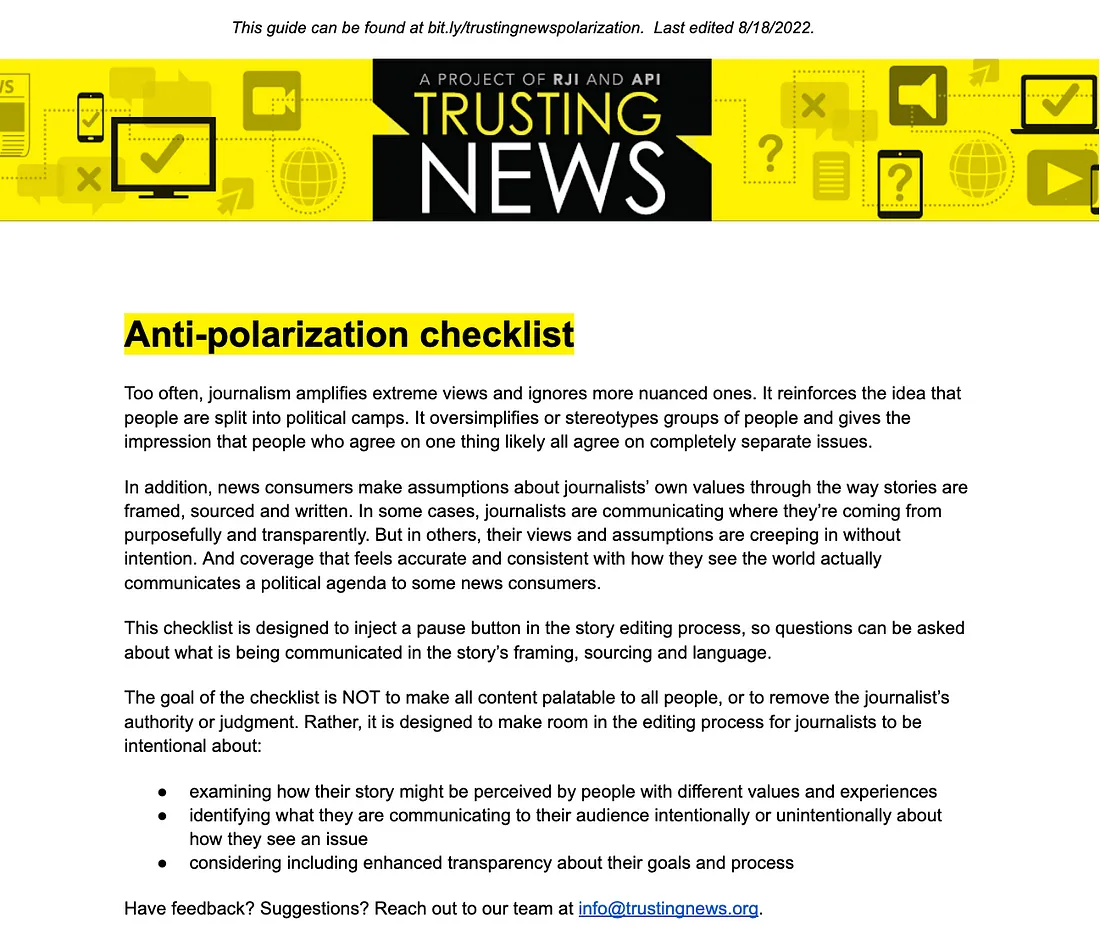
We’ve worked with partner newsrooms to create and refine a tool for journalists — a checklist designed to make room in the editing process for journalists to be intentional about:
Make your reporting less polarizing with this Trusting News guide
We’ve worked with partner newsrooms to create and refine a tool for journalists — a checklist designed to make room in the editing process for journalists to be intentional about:
- examining how their story might be perceived by people with different values and experiences
- identifying what they are communicating to their audience intentionally or unintentionally about how they see an issue
- considering including enhanced transparency about their goals and process
What this guide is not
The goal of the checklist is NOT to make all content palatable to all people. That’s not possible or desirable. Some people will not find your coverage fair no matter what you do. And some are seeking confirmation bias to such an extent that anything that does not confirm THEIR worldview feels biased, not neutral.
This post is a step-by-step guide to using the anti-polarization checklist as you talk about how to frame stories — and as you report, write, edit and share them.
Why this is important
Too often, journalism amplifies extreme views and ignores more nuanced ones. It reinforces the idea that people are split into political camps. It oversimplifies or stereotypes groups of people and gives the impression people who agree on one thing likely all agree on completely separate issues.
In addition, news consumers make assumptions about journalists’ own values through the way stories are framed, sourced and written. In some cases, journalists are communicating where they’re coming from purposefully and transparently. But in others, their views and assumptions are creeping in without intention. And coverage that feels accurate and consistent with how they see the world actually communicates a political agenda to some news consumers.
Our process
Partner newsrooms tested out the ideas as part of our Road to Pluralism initiative. You can read which newsrooms participated and what our research team learned. And in this post, you can hear what our partner journalists said about why and how they are depolarizing the news. With their collaboration, we have a revised, more efficient tool to share.
A big thanks to our newsroom partners and the researchers who helped us with this project. The following learnings wouldn’t have been possible without them!
First: Initial story conversations and sourcing
As the story idea is discussed, consider how you would articulate its purpose. What are the questions you’re trying to answer? Are those questions worded in a way that would feel relevant and respectful to people from a range of views?
Whose perspectives will the story center? Whose perspectives is it not designed to reflect?
Our partner journalists hear over and over that people don’t feel like their opinions are reflected in journalism because they’re not as extreme as the people they see quoted. Their views are more complicated and nuanced. They’re not as strictly partisan. They bring a complicated mix of experiences and values to each issue, whereas news coverage often gives the impression that one camp feels this way, another camp feels that way and the two camps are at odds.
(Interested in learning what journalists find out when they take time to listen to people who don’t trust them? Hear from some of them here.)
Consider where your sources fall along a range of views on the subject matter being discussed. Do they neatly reflect “one side” and “the other side”? If so, is that appropriate? Would the story benefit from less ideological views or more complicated views?
Also, where are your sources coming from? Have you considered their potential agendas? And if so, is there an opportunity to acknowledge that as you introduce them in your story?
Second: Word choices and tone
The words we choose communicate so much. Which stakeholder’s language do we adopt? When are we passing on their words, and when are we picking our own to describe what we have observed or analyzed?
Journalists like to make stories interesting, and we search for language that will make a story lively and compelling to consume. Sometimes, though, those efforts introduce the opportunity for a story to feel out of touch, skewed toward one side or snarky. They also leave some news consumers feeling like they know where we stand on the issue — whether we intended to communicate that or not.
One right-leaning reader told a partner journalist the words we inject are like sprinkling salt on a good steak. It’s unnecessary, and it can ruin something that otherwise would have been satisfactory and delicious.
After talking to people about their perceptions of bias in the news, our partner journalists sometimes come to the conclusion that more sterile language is actually a better option. The payoff from making the story more interesting is not worth the potential risk of leaving some people alienated from the news.
As you report and write, our checklist invites you to consider these factors:
- Examine your adjectives describing groups, actions and points of view. Are they necessary? Also, check your adverbs and verbs. They can imply we know the actor’s intent and communicate what we think about their actions.
- Are there words used to describe the issues or positions that reflect the preferences of one group? If so, is that intentional?
- Examine your tone. Is there playful or snarky language that makes light of an issue, or could potentially be perceived as biased? Could the descriptions be “sterilized”?
Third: Framing and labels
What overall impression does your story give of whose story you’re telling? Whose actions or opinions are you describing? What questions are you answering?
These questions are key to imagining how a story will be perceived.
Start by looking at the lead and the nutgraf — the places that communicate what the story is and why it matters. How would they land with people who have different world views and opinions on the topic being discussed?
Ask those questions about the headline, too. People make very quick decisions about what to click on. It’s too easy for a nuanced, balanced story to get discarded and ignored because the headline prioritizes humor or snark or over-emphasizes an interesting but extreme point of view. Consider both the clicks an interesting headline could get AND the clicks you could lose from people who are turned off by it.
Then spend some time looking at the labels and descriptions you use. Highlight them in your document.
- Do they group together people who deserve to be grouped? (For example, are you reflecting the opinions of a political party? Or of people who voted for a specific candidate? Or of people who share a common view? Or of people who took the same action?)
- Are you using a few people to speak on behalf of a much larger group? If so, would they feel comfortable with that?
- Are you using a frame of war or battle? Are you adopting weaponized wedge language? Are you connecting local issues to national themes. If so, is that appropriate and helpful context or does it communicate your own beliefs and assumptions about what other issues are related to this story?
- Are you playing into prejudices rather than complicating people’s view of an issue or a group of people? Are you prompting outrage or confirmation bias? If so, are you sure it’s appropriate? Could you instead prompt curiosity?
Fourth: Explaining your decisions
Journalists often assume that their integrity, decision-making and goals are clear to the people they aim to serve. Unfortunately, we know that is simply not the case. We don’t get credit for elements of our work that we don’t explicitly draw attention to.
At Trusting News, we work with journalists to build transparency into their coverage. Here’s a handout about what that can look like.
Let’s look at some questions journalists might think about while using this checklist and what they might communicate to their audiences within their stories.
- What role does this story play in your coverage overall? Often, journalists consider the balance of their coverage as it relates to a collection of stories — as if each piece of journalism is a chapter in a larger story. If that’s true here, congratulations on investing in that kind of depth of reporting! Now ask yourself: If a news consumer lands on today’s chapter, will they know it’s part of a larger story? Will they understand how it fits in? Will they be invited to zoom out to the rest of the package? Make plans to link out to it, but don’t stop at a link. Articulate how it fits in within the latest story.
- Would your reason for doing the story — the questions you’re trying to answer — be clear to people with a variety of views? Would it be helpful or appropriate to explain the story’s purpose in an editor’s note, side box or another spot?
- Think about your sourcing. Can you explain to your audience why you are choosing these sources? What gives them credibility or expertise? Where are they coming from? Do they have an agenda you need to acknowledge? Did you talk to other people who weren’t included, and did they inform your reporting? (No, the audience doesn’t automatically know you don’t include every source in the finished story.)
- Think about your word choices. Where you took care with your descriptions of people, opinions and groups, you have an opportunity to explain why. If you are consistent in those decisions, don’t make the mistake of assuming the audience will notice and give you credit for it. Consider explaining your language in a parenthetical, an editor’s note or a sidebar.
We hope this checklist is helpful
We’ve been evolving the anti-polarization checklist, with the help of our partner journalists, and it will continue to be updated. If you have questions or feedback, or if you could use support figuring out how to use it, feel free to reach out to our team via email or on Twitter.
Are you on a Road to Pluralism?
See what our initiative involves and find more resources on our website.
At Trusting News, we learn how people decide what news to trust and turn that knowledge into actionable strategies for journalists. We train and empower journalists to take responsibility for demonstrating credibility and actively earning trust through transparency and engagement. Subscribe to our Trust Tips newsletter. Follow us on Twitter and LinkedIn. Read more about our work at TrustingNews.org.

Director Joy Mayer (she/her) founded Trusting News in 2016 after a 20-year career in newsrooms and teaching. She spent 12 years at the Missouri School of Journalism, where she created an audience engagement curriculum and a community outreach team in the newsroom of the Columbia Missourian and also taught web design and print design. She lives in Sarasota, Florida, and can be reached at joy@TrustingNews.org or on Twitter @mayerjoy.
